RICHARD CLINNICK was the first trade press journalist to take a ride ‘upfront’ on a Class 800 on the main line, and finds out how Great Western Railway travel will be transformed
“I’ve been driving these for just over a month. I’m warming to them. Driver-wise, they are lovely.”
Bristol-based driver Mike Fortune is at the controls of a Class 800 Intercity Express Train, and we are travelling on Great Western Railway’s 1015 London Paddington-Cardiff Central on May 21.
GWR has invited RAIL to travel in the cab of an IET as far as Swindon, to assess how the trains are performing.
GWR launched the first IETs on October 16 last year (RAIL 838). The launch was not a success, with air-conditioning failing, the launch set stopping at Twyford during the switch from diesel to electric, a late departure from Bristol, and (infamously) the soaking of passengers after a panel holding water fell into the saloon.
The interiors of the trains have also come in for heavy criticism, with the quality of the seats openly queried by passengers and industry commentators alike.
The IETs are replacing High Speed Trains (HSTs) that were introduced in August 1976, ahead of the implementation of the 125mph timetable on the Great Western Main Line that October. The HSTs have been in residence ever since, although talk of their replacement began in the early to mid-2000s with HST2 and the fitting of MTU power units.
It has also been noted that on diesel mode, the ‘800’ cannot compete with its predecessor when it comes to performance. It takes a lot longer to reach 125mph, and is not able to sustain that speed in the way as an HST can. It’s also worth remembering that while the HSTs may be anywhere between 35 and 42 years old, their power units are a lot newer (with the same manufacturer as the engines fitted to IETs).
As I arrive at Paddington, the number of HSTs and IET is around 50/50, although what is noticeable is the number of five-car ‘800s’ operating, instead of as a pair of ten-car units.
A career railwayman, Fortune joined straight from school and has been based in the West Country for his entire career.
“I’ve been on the railway for 39 years, and a driver since 1988. Apart from six months at Westbury, I have always been at Bristol,” he says.
His shift started at 0410 with a taxi to Hitachi’s Stoke Gifford depot. From there he took an ‘800’ empty to Weston-super-Mare, and which then formed a train to Paddington. His next job was our 1015 London Paddington-Cardiff Central (worked by 800034, coupled to 800006) to Bristol Parkway, before returning to Temple Meads and the end of his shift.
As well as Bristol, Fortune also signs the road to Swansea, Worcester and Hereford. He has been with GWR since it was privatised back in 1996.
“Bristol is rarely the same route I have learned. These are the 18th different traction I’ve driven - in the British Rail days I also did freight and parcels. They are a bit of a culture shock in your 50s,” he laughs.
As I arrive at Paddington for my exclusive cab ride, the first thing I discover is that the usual high step into a train cab from the platform has gone - it’s almost level. My next impression is just how spacious the ‘800’ cab is.
There are two seats in the cab - a central one for the driver, and a smaller seat with a flip-down table (perfect for a journalist with his notepad!). Three grown men easily fit in the cab, and indeed can even move around without getting in each other’s way.
As Fortune prepares the train ready for departure, I watch the number of trains arriving and departing from Paddington - many are IETs.
At 1015, we ‘get the road’ and Fortune applies the power. Departure is effortless and smooth, with little sound. The most noise comes from the public announcement system, as the guard and on-board hosts supply passengers with information about the train and the on-board services.
The guard sounds cheerful. “Yeah, but you wouldn’t not want to have a ticket with him,” is Fortune’s reply.
There is a speed restriction coming out of the terminus. We are on Platform 8, so that also requires crossing a number of tracks to reach the Down Fast. As we reach that, we pass 800003/004 which are being used for testing purposes.
As we accelerate towards North Pole, I look around the cab. It’s air-conditioned, and noticeably so, which is welcome on a warm, sunny day. The second seat, which I have made my home, seems crammed in, although it’s unlikely to be used too often.
The driver’s desk looks huge, full of various screens and controls. The CCTV screens to Fortune’s left give an overview of the train doors (which he opens and the guard closes). They offer a good view, and should he need to do so, Fortune can click on a screen and zoom in.
In the centre of the desk is a screen for European Train Control System (ETCS) equipment, although this is not yet fitted, and nor does Fortune know when that is likely.
His seat is raised. It is on a platform in the centre of the cab, and gives a superb view of the GWML ahead. The ride quality is also incredibly smooth.
As we thread our way westwards, Fortune uses the Automatic Train Protection (ATP) fitted to the trains. Positioned on a screen to his left, this tells him line speed, but also where there are signal faults - and there are some today. He points out the need to hit an alarm at one signal near North Pole depot, and again further west.
“I constantly have to think about the signals through Acton and Ealing,” he explains. Due to the mechanical nature of the brakes fitted to the HST fleet, Fortune says the older trains often get a lot of brake applications when the alarm sounds.
West of Ealing, we quickly reach 125mph. The ‘800s’ achieve the speed effortlessly on electric power. Through this section, the work carried out as part of the GWML upgrade is palpable - electrification, new ballast, extended stations and new EMUs whizz past, as do more IETs.
“It’s a hell of a difference getting to 125mph on diesel,” Fortune tells me.
“I guess we’ll find out soon,” I reply, to which he warns: “Didcot to Swindon is perhaps 15-20mph slower with these than an HST.”
At Maidenhead, a sharp brake application is required. “These do have fantastic brakes,” says Fortune.
The approach to Reading is amazing - the railway here has changed so much. We roll into Platform 9, with the modern station fully wired and full of IETs and EMUs.
The train’s management system knows on which platform the train is due, although the TMS currently has problems. The system is powered via GPS, but the drivers are still having to input data - for example, 800034’s TMS thinks it is still working the inbound train for London, and Fortune has to override this. He says this is not a major problem, more of an irritant.
As we depart Reading heading west, the former depot is on the left, in the heart of the new railway triangle, while on the right is GWR’s replacement depot.
Central to all this is the flyover, which opened in January 2015. The IETs climb this effortlessly. “You don’t even notice it,” says Fortune.
Now we are on Brunel’s famous ‘Billiard Table’, and the smoothness of the ride is evident as we speed west. There is a real feeling of just how quick we’re travelling. The rolling countryside, covered in trees, passes in a flash as we head towards Didcot.
Around one mile from Didcot Parkway, Fortune switches the ‘800s’ from electric to diesel power. If he hadn’t told me, I wouldn’t have known. There is no sudden shaking caused by the diesel engines firing into life, nor is there the sound of a pantograph dropping. All six engines on the ten-car formation are now powering, but Fortune is coasting into Didcot anyway.
Should the train be a ‘fast’ and not booked to call at Didcot Parkway, then Fortune says that should the TMS be working, he will make the switch at Didcot as per usual. However, if the TMS is not working, he would make the power switch at Reading.
As we wait at Didcot, he says of the IETs: “On diesel they are quick, just slower.”
Out of the station and the line speed is almost immediately 125mph, but it takes 800034/006 some seven minutes to reach 100mph at Challow (achieved at 1104). All six diesels are providing around 75% of their power, which Fortune says is about right as the rest is used to power other facilities on the trains such as lighting and air-conditioning.
At 1106, near Uffington, and Fortune says that he would have an HST at 120mph here: “Not a shorter 2+7 set, but a standard 2+8.”
I suggest that it seems as if we are plodding along and that the sense of speed has gone. He agrees, confirming his earlier warning: “Right now we are a good 15-20mph slower.”
What’s worth noting is that the IET was not designed to operate on diesel at this point. Its pantograph should be raised and it should be outperforming the HST. Yet the OLE we are passing under is not complete.
This means that the IET, even ‘unmuzzled’ via modifications that enable more power to be achieved by the MTU engines, cannot bring the planned benefits of the trains. GWR says that when the wires are energised to Swindon and Wootton Basset, then the performance will outstrip an HST.
Fortune warns: “We probably won’t get to 125mph on diesel on this stretch, and there is a Temporary Speed Restriction anyway.”
We are running around two minutes late: “If this was on electric we’d recover that easily. I did a Cotswold train with one, and we were ten or 11 minutes late at Oxford and right-time at Paddington. They are that good!”
Arrival at Swindon is (as expected) late. As we arrive, a pair of IETs bound for London roll into the Wiltshire station.
I bid Fortune farewell, and 800034/006 accelerate westwards, under the wires but on diesel power. The benefits of these trains are established. Soon, perhaps, Fortune and his colleagues will be able to unleash that on the GWML.
- To read about the Great Western Railway IET launch, read RAIL 838, available digitally on Android/iPad.

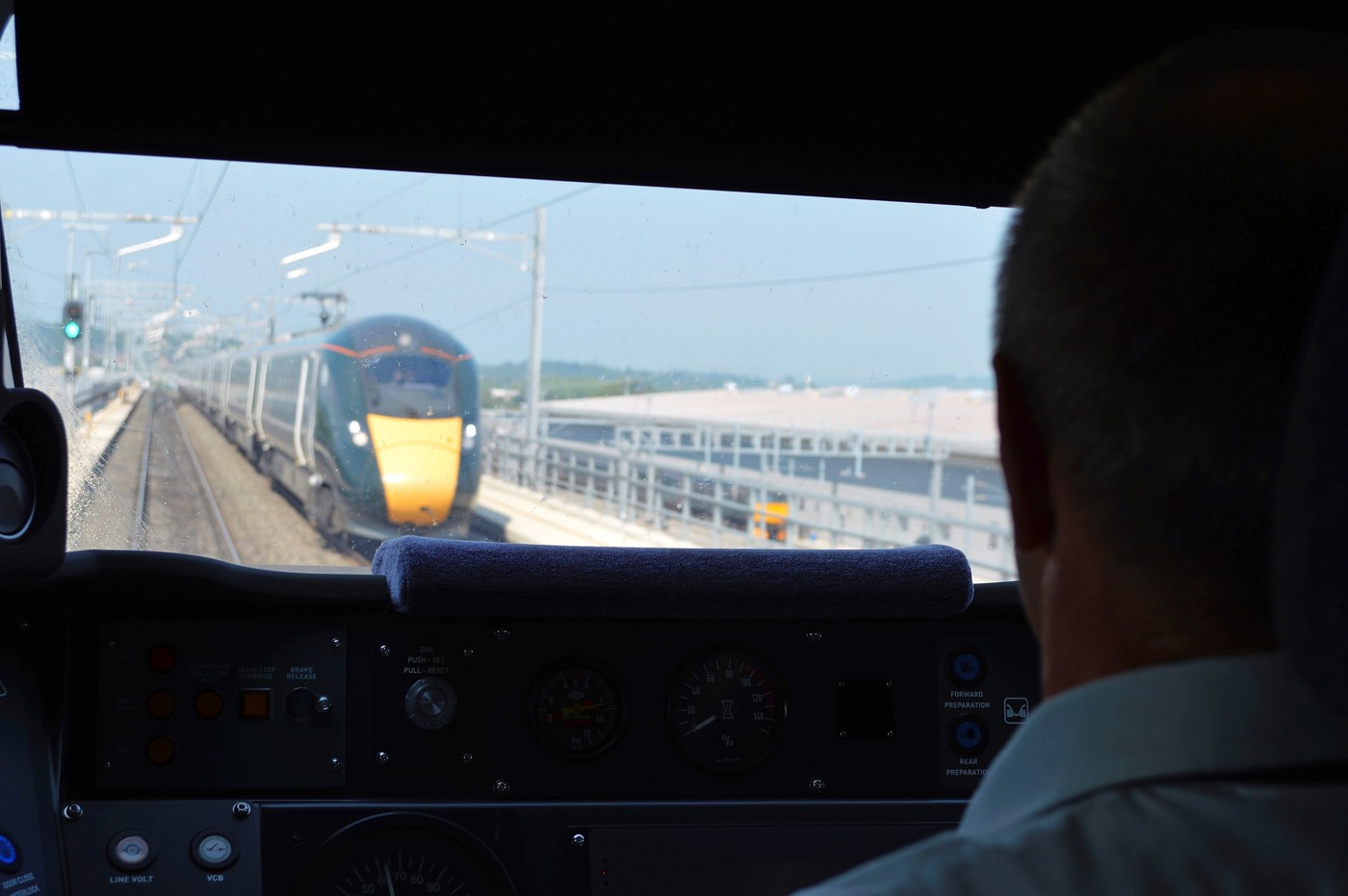
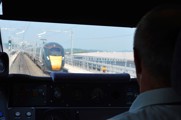
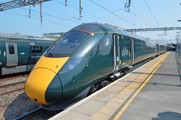
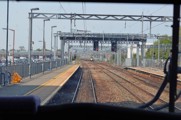
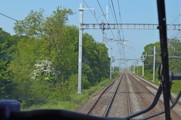
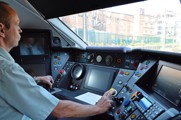
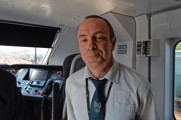
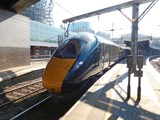
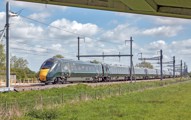














AndrewJG8918 - 14/07/2018 17:56
Sounds like most drivers who work with Great Western Railway are already experiencing the feel of driving a hybrid IET Class 800 and Class 802 rolling stocks. Even train drivers on London North Eastern Railway (formerly Virgin Trains East Coast) will also experience the quality of the Class 800's and Class 801's when they introduce their new hybrid & electric IET's from December this year.